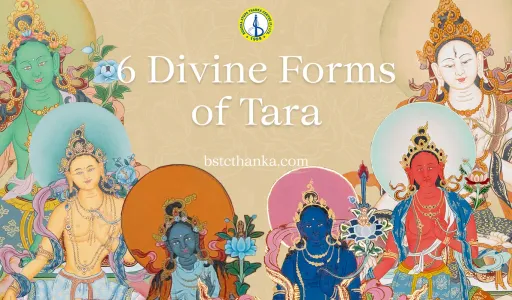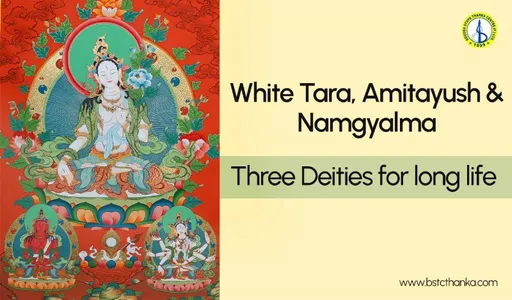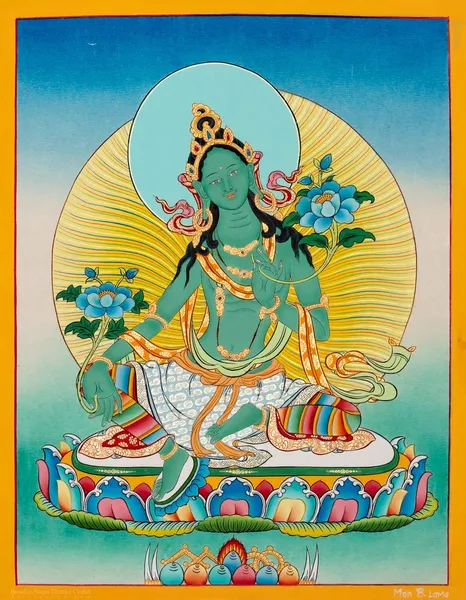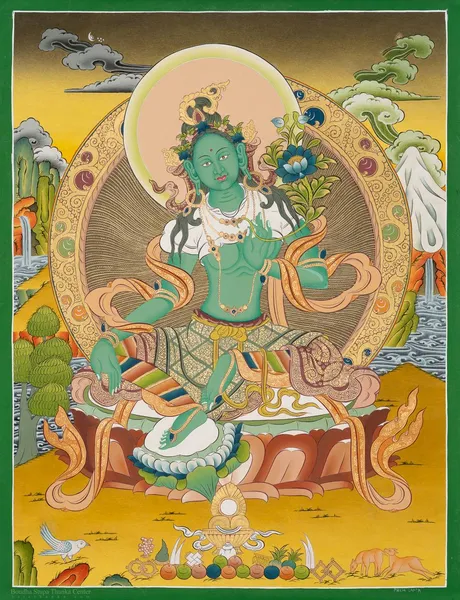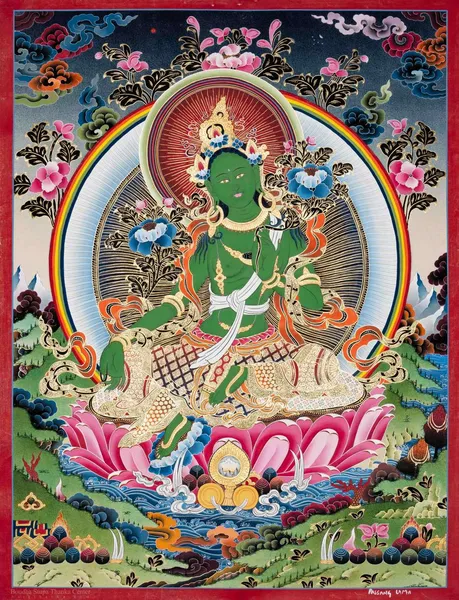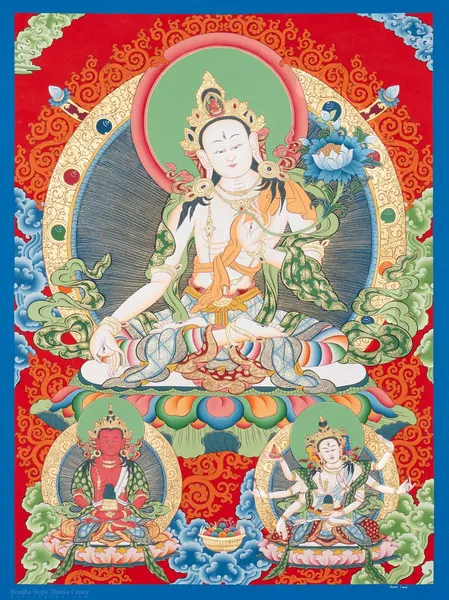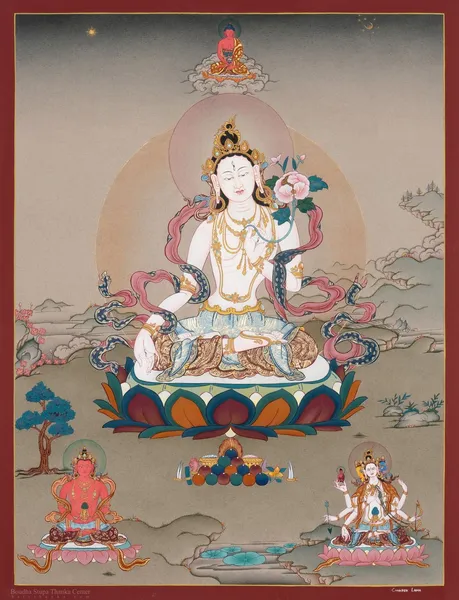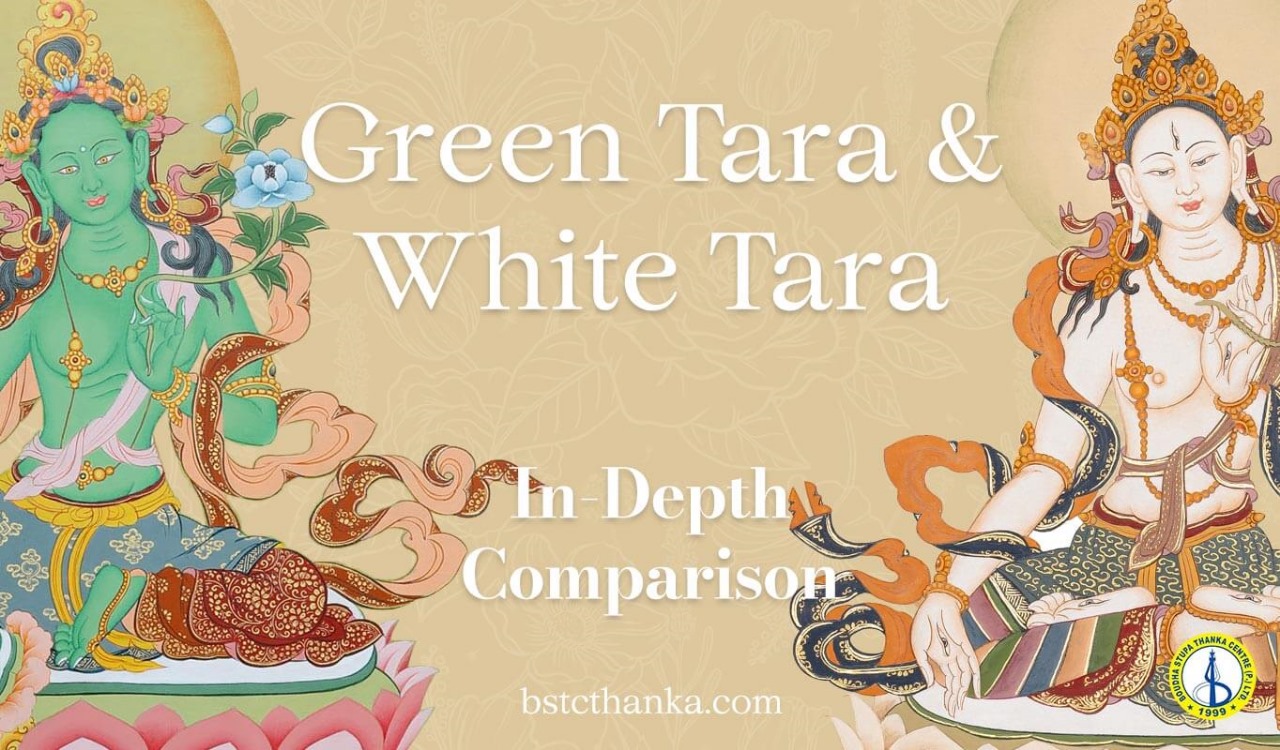
Green Tara and White Tara: An In-Depth Comparison
Tara is a revered figure in Buddhism, known for her compassion and ability to help those in need. She represents the feminine aspect of enlightenment and is often seen as a guide for practitioners seeking spiritual growth. Tara is also associated with various qualities, such as protection, wisdom, and healing, making her a beloved figure among followers.
Among the many forms of Tara, Green Tara and White Tara stand out as two of the most popular. Green Tara is known for her swift action and ability to remove obstacles, while White Tara embodies purity and long life. In this blog, we will provide a detailed comparison between these two forms of Tara, exploring their unique qualities, symbolism, and the ways they can influence our spiritual journeys.
Who is Green Tara?
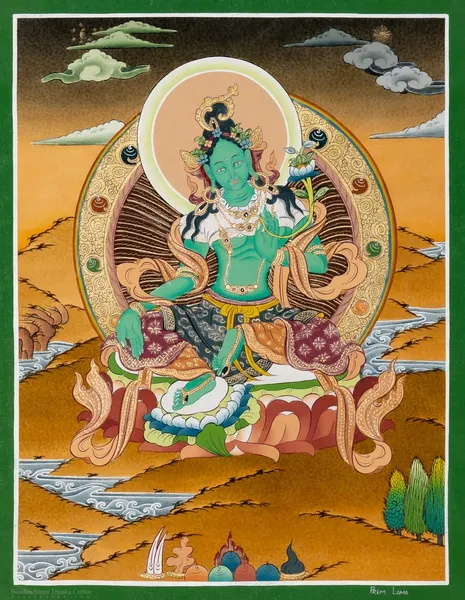
Green Tara, also known as Syamatara, is one of the most popular and widely revered forms of the Tara goddess in Buddhism. She is associated with activity, protection, and swift action. Green Tara is depicted with a green body, sitting in a relaxed pose with her right leg extending down, ready to spring into action to help her followers. She is celebrated for her ability to offer protection and assistance, particularly in times of fear or danger. Green Tara is seen as an embodiment of enlightened activity, bestowing blessings, removing obstacles, and guiding her devotees toward spiritual liberation.
Symbolism and Role of Green Tara
Green Tara is rich in symbolism and holds a special place in Buddhist practice. Her vibrant green color represents the vitality and dynamic energy she brings to her followers. This color also signifies her ability to overcome obstacles and bring swift relief in challenging situations. Green Tara is often seen as a protector who helps remove fears and difficulties, guiding practitioners toward enlightenment with her active compassion.
Her role extends beyond protection; she embodies the qualities of fearless action and compassionate response. People often turn to Green Tara for help in times of crisis or uncertainty, seeking her guidance and support. Many practitioners meditate on Green Tara thangkas calling upon her blessings in their daily lives. These thangkas serve as focal points during meditation, helping individuals connect with their energy and receive their blessings.
Who is White Tara?
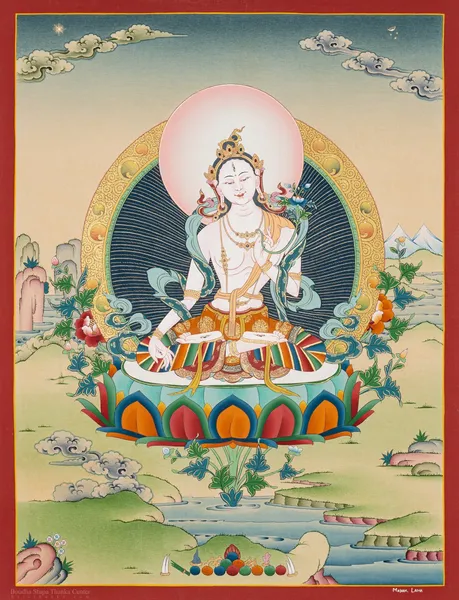
White Tara in Buddhism, also known as Sitatara and one of the long-life deities of Buddhism, is another highly revered form of the Tara goddess. She is often depicted with seven eyes - one on each palm, one on the sole of each foot, and one on her forehead. These seven eyes symbolize her all-seeing wisdom and vigilant care for her followers. White Tara is associated with longevity, healing, and attaining spiritual and worldly accomplishments. Her presence is believed to promote physical and emotional well-being, offering gentle, nurturing guidance throughout one's spiritual journey.
Symbolism and Role of White Tara
White Tara is often depicted with a serene expression, seated on a lotus throne, which represents purity and enlightenment. Her white color signifies purity, wisdom, and truth. White Tara is also known for her seven eyes: two on her face, one on her forehead, and four on her palms and feet, symbolizing her ability to see the suffering of all beings and her readiness to help them. She is considered a compassionate protector who guides her followers toward enlightenment and helps them overcome physical and mental suffering.
The significance of White Tara extends beyond her symbolism. She is believed to offer protection and healing, making her a central figure in many Buddhist practices. Devotees often recite her mantra to invoke her blessings and virtues. White Tara is also associated with long life and is often prayed to for health and longevity. Many people meditate on White Tara thangkas to connect with her compassionate energy and seek her guidance in their spiritual journey.
Differences Between Green Tara and White Tara
Green Tara and White Tara are two prominent deities in Tibetan Buddhism, each embodying distinct aspects of spiritual practice and support. While both are revered for their compassionate qualities, they serve different roles and symbolize various attributes. Understanding the difference between Green and White Tara can deepen one's practice and appreciation of their unique contributions to spiritual growth:
1. Color and Symbolism:
Green Tara:
Green Tara is depicted in green, symbolizing active compassion and the energy to overcome obstacles. Green Tara is often seen as a protector who swiftly responds to the needs and prayers of her followers.
White Tara:
She is depicted in white, representing purity, wisdom, and longevity. White Tara is associated with healing, long life, and serenity, offering a more nurturing and peaceful form of compassion.
2. Attributes and Iconography:
Green Tara:
Green Tara is usually shown in a dynamic posture, with one leg extended, ready to step down and help those in need. This posture signifies her readiness to take action. She often holds a blue lotus (utpala) in her left hand.
White Tara:
She is depicted in a more meditative and serene posture, often seated with both legs crossed. White Tara is characterized by her seven eyes, which symbolize her vigilance and ability to see the suffering of all beings. She holds a white lotus (padma) in her left hand.
3. Mantras and Practices:
Green Tara:
Green Tara's mantra is “Om Tare Tuttare Ture Soha,” which is chanted to invoke her swift assistance and protection. Green Tara practices are often focused on overcoming fears and obstacles.
White Tara:
The White Tara mantra is “Om Tare Tuttare Ture Mama Ayur Pune Gyana Punya Pushthim Kuru Soha,” which is recited for healing, long life, and wisdom. Practices involving White Tara are centered around health, longevity, and inner peace.
4. Role and Function:
Green Tara:
She is considered the embodiment of active compassion and is often invoked for immediate help and protection. Green Tara is seen as a savior who quickly responds to the cries of those in distress.
White Tara:
She embodies a more nurturing and sustaining form of compassion, focusing on healing and longevity. White Tara is often called upon for long-term well-being and spiritual growth.
Similarities Between Green Tara and White Tara
Despite their differing attributes and roles, Green Tara and White Tara share several notable similarities that enhance their significance.
Embodiment of Compassion
Both Green Tara and White Tara are revered as embodiments of compassion. They are seen as compassionate figures who offer help and support to those in need, demonstrating deep empathy and kindness toward all beings.
Protective Qualities
Each Tara serves as a protector, albeit in different ways. Green Tara is known for her swift action in removing obstacles and dangers, while White Tara provides protection through her calming influence and healing abilities, ensuring well-being and safety.
Association with Meditation
Both deities are central to meditation practices. Practitioners often use their thangka paintings and mantras to connect with their energies, seeking their blessings and guidance. Meditation on either Tara aims to cultivate inner peace, strength, and spiritual growth.
Role in Healing
Healing is a significant aspect of both Green Tara and White Tara's roles. Green Tara’s dynamic energy helps remove physical and spiritual blockages, while White Tara focuses on long-term health and longevity through her serene, nurturing presence.
Feminine Divine Energy
Both represent feminine divine qualities and are often regarded as manifestations of the goddess energy in Tibetan Buddhism. They embody aspects of the divine feminine, such as wisdom, compassion, and the ability to nurture and support practitioners on their spiritual journey.
Conclusion
Green Tara and White Tara each play vital roles in Buddhist practice, offering unique forms of compassion and support. While Green Tara is known for her swift action and protective qualities, White Tara embodies healing and serenity. Both forms of Tara encourage practitioners to cultivate compassion, seek guidance in difficult times, and promote spiritual growth. By understanding their similarities and differences, followers can deepen their connection to these powerful figures and enhance their spiritual journeys. Whether invoking Green Tara's dynamic energy or White Tara's nurturing presence, both offer invaluable blessings to those who seek their guidance.
FAQs
Are Green Tara and White Tara the same?
No, Green Tara and White Tara are not the same. While both are forms of the goddess Tara and share some similarities, they have different attributes and roles. Green Tara is known for her quick action and protection, while White Tara symbolizes purity and long life.
How do the colors of Green Tara and White Tara symbolize their roles?
The colors of Green Tara and White Tara symbolize their unique roles and qualities. Green Tara’s green color represents vitality, dynamic energy, and her ability to swiftly remove obstacles and offer protection. White Tara’s white color symbolizes purity, wisdom, and long life, reflecting her role in healing and providing blessings for a healthy, long life.
Can I pray to both Green and White Tara?
Yes, you can pray to both. Many people do this to receive different types of blessings. Green Tara is for quick help and protection, and White Tara is for long-term well-being and wisdom.





